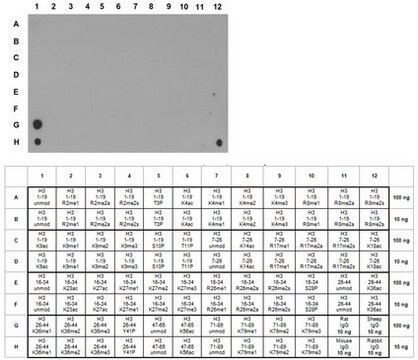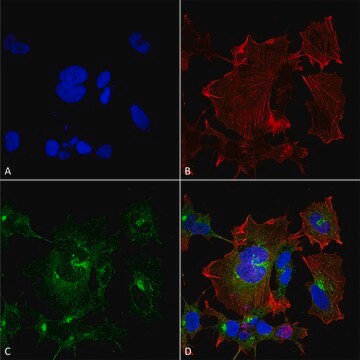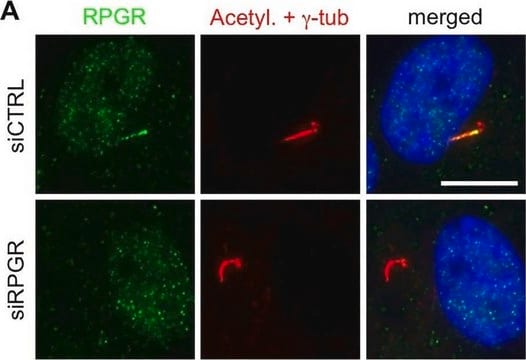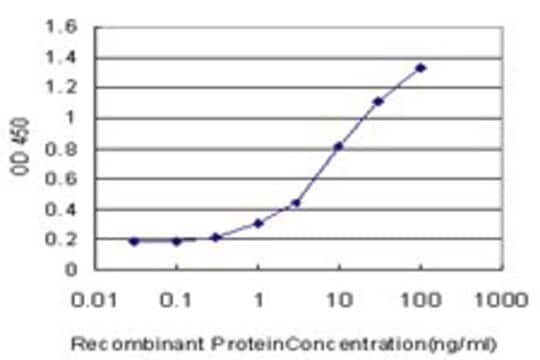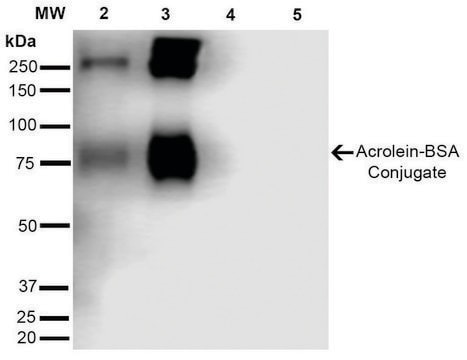MABS2226
Anti-ELOVL3 Antibody, clone V61 P2B3 D10
Synonym(s):
Elongation of very long chain fatty acids protein 3;EC:2.3.1.199;3-keto acyl-CoA synthase ELOVL3;Cold-inducible glycoprotein of 30 kDa;ELOVL fatty acid elongase 3;ELOVL FA elongase 3;Very long chain 3-ketoacyl-CoA synthase 3;Very long chain 3-oxoacyl-CoA
About This Item
Recommended Products
biological source
mouse
Quality Level
conjugate
unconjugated
antibody form
purified antibody
antibody product type
primary antibodies
clone
V61 P2B3 D10, monoclonal
mol wt
calculated mol wt 31.5 kDa
purified by
using protein G
species reactivity
human
packaging
antibody small pack of 100 μL
technique(s)
ELISA: suitable
immunohistochemistry (formalin-fixed, paraffin-embedded sections): suitable
western blot: suitable
isotype
IgG1κ
epitope sequence
N-terminal
Protein ID accession no.
UniProt accession no.
shipped in
ambient
target post-translational modification
unmodified
Gene Information
human ... ELOVL3(83401)
Related Categories
General description
Specificity
Immunogen
Application
Evaluated by Immunohistochemistry (Paraffin) in human colon cancer tissue sections.
Immunohistochemistry (Paraffin) Analysis: A 1:250 dilution of this antibody detected ELOVL3 in human colon cancer tissue sections.
Tested Applications
Western Blotting Analysis: A representative lot detected ELOVL3 in Western Blotting applications (Alnabulsi, A., et al. (2019). Int J Cancer. 45(4):1138-1147).
ELISA Analysis: A representative lot detected ELOVL3 in ELISA applications (Alnabulsi, A., et al. (2019). Int J Cancer. 145(4):1138-1147).
Immunohistochemistry Applications: A representative lot detected ELOVL3 in Immunohistochemistry applications (Alnabulsi, A., et al. (2019). Int J Cancer. 145(4):1138-1147).
Note: Actual optimal working dilutions must be determined by end user as specimens, and experimental conditions may vary with the end user
Physical form
Storage and Stability
Other Notes
Disclaimer
Not finding the right product?
Try our Product Selector Tool.
Storage Class Code
12 - Non Combustible Liquids
WGK
WGK 1
Flash Point(F)
Not applicable
Flash Point(C)
Not applicable
Certificates of Analysis (COA)
Search for Certificates of Analysis (COA) by entering the products Lot/Batch Number. Lot and Batch Numbers can be found on a product’s label following the words ‘Lot’ or ‘Batch’.
Already Own This Product?
Find documentation for the products that you have recently purchased in the Document Library.
Our team of scientists has experience in all areas of research including Life Science, Material Science, Chemical Synthesis, Chromatography, Analytical and many others.
Contact Technical Service

